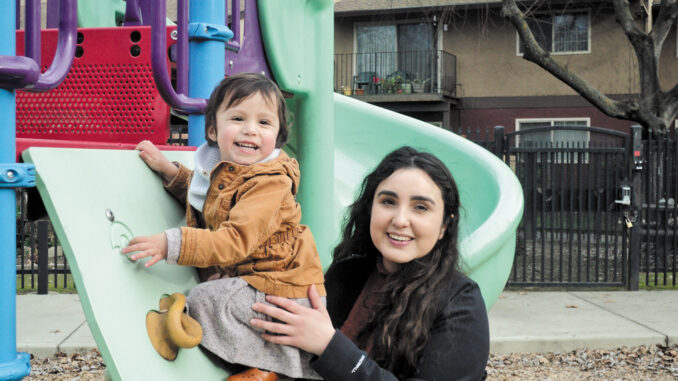
BY ALLEN PIERLEONI
A home for every family
2020 Census could help alleviate San Joaquin Valley’s affordable-housing crisis.
Federal funding based on Census data nourishes a broad spectrum of programs, including support for affordable housing largely sponsored by the Department of Housing and Urban Development (HUD).
The federal government defines “affordable housing” as housing that costs 30 percent or less than household income. If a family pays more, it is classified as “cost-burdened,” leading to the possibliity of that family having to forgo other necessities (medical care, food, clothing) in order to pay the rent or mortgage. HUD estimates that more than 12 million households spend more than half their annual incomes on housing.
Affordable housing in California, with nearly 40 million citizens, continues to be a front-and-center issue as the gap between housing supply and housing demand widens.
Did you know that in 2019, the number of people who became homeless rose by 18% in Merced County?
“It’s one of the most pressing issues in the Central Valley,” says Janine Nkosi, a Sociology Professor at Fresno State and Regional Advisor to Faith in the Valley.
Faith in the Valley is a grass-roots organization that focuses on social concerns in Fresno, Kern, Merced, Stanislaus and San Joaquin counties. Its membership includes 120 congregations representing 100,000 people.
“We don’t have enough affordable-housing units to supply all the people who need them,” Nkosi says. “The Census [findings] are going to create a real opportunity for us to have an impact on the crisis, whether it be through new development or preserving some of the current affordable-housing stock.”
Part of Faith in the Valley’s organizing work involves door-to-door canvassing “to ensure that every single person in the Central Valley is counted, because there is so much at stake,” she says.
To that end, Faith in the Valley has partnered with Communities for a New California in the Cuenta Conmigo (Count On Me) Coalition to help finish unfinished neighborhoods with the Census process.
“It’s vital that everybody be counted,” Nkosi emphasizes. “As rents rise and wages aren’t keeping pace, affordable housing becomes more out of reach. For the cost-burdened, one unexpected event can push them into eviction, which leads to homelessness. We need a stopgap to keep folks from getting there in the first place.”



